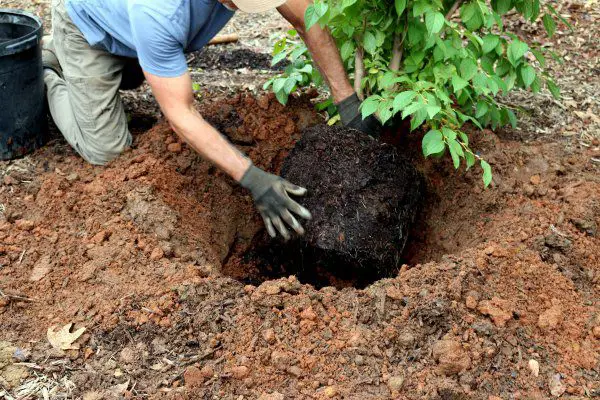Are you ready to embark on a rewarding journey into the world of fruit trees? Perhaps you’re a novice gardener eager to try your hand at growing a tree for the first time? Look no further than the delightful Pixy Plum tree—a perfect choice for beginners. Whether you have a spacious garden or just a small corner to spare, this compact and versatile fruit tree can thrive almost anywhere in the UK. In this comprehensive guide, we’ll walk you through the step-by-step process of nurturing a Pixy Plum tree from its humble beginnings to a bountiful harvest. So, put on your gardening gloves, roll up your sleeves, and let’s get started on this exciting green-thumb adventure!
Choosing Pixy Plum: Why It’s Ideal for Beginners
Pixy Plum, a dwarf plum tree variety, is an excellent choice for novice gardeners for several reasons:
Compact Size: Pixy Plum trees are small, reaching a height of only 6-8 feet when fully grown. This makes them suitable for even the smallest gardens or even for container gardening on a patio or balcony.
Abundant Fruit Production: Despite their size, Pixy Plum trees are prolific fruit bearers. You can expect to harvest juicy, sweet plums in just a few years after planting.
Easy Maintenance: These trees are relatively low-maintenance, making them perfect for beginners. With proper care, Pixy Plums can thrive and provide you with delicious fruit year after year.
Adaptable to UK Climate: Pixy Plum trees are well-suited to the British climate. They can tolerate cooler temperatures and are hardy, making them a reliable choice for UK gardeners.
Now that you’re convinced of Pixy Plum’s suitability for beginners, let’s explore the step-by-step process of growing your very own Pixy Plum tree.
Step 1: Choosing the Right Variety and Rootstock
The first step in your Pixy Plum growing journey is selecting the right variety and rootstock. When it comes to Pixy Plums, there are different varieties to choose from, each with its unique flavor and characteristics. Some popular Pixy Plum varieties include:
Pixy: The classic Pixy Plum variety, known for its sweet and juicy fruit.
Opal: A slightly larger plum with a sweet, aromatic flavor.
Victoria: A traditional British favorite, Victoria plums are sweet and excellent for eating fresh or making jams and pies.
In addition to selecting the variety, consider the rootstock. Dwarfing rootstocks, such as St. Julien A, are commonly used for Pixy Plum trees, as they help control the tree’s size and make it more suitable for smaller spaces.
Step 2: Finding the Right Location
Pixy Plum trees, like most fruit trees, thrive in sunny locations. Pick a location for your garden that gets six to eight hours of direct sunlight per day. Make sure the soil drains properly to avoid soggy roots, which could damage the tree.
Step 3: Planting Your Pixy Plum Tree
Planting your Pixy Plum tree correctly is crucial for its long-term health and productivity. Here’s a step-by-step guide:
Prepare the Soil: Dig a hole that is about twice as wide and deep as the tree’s root ball. Loosen the soil and mix in some organic matter, such as compost or well-rotted manure, to improve soil fertility.
Remove the Tree from its Container: Gently remove the tree from its container, taking care not to damage the roots. If the tree is in a pot, you can carefully slide it out. If it’s in a plastic bag, cut the bag away.
Position the Tree: Place the tree in the center of the hole, ensuring that the graft union (a noticeable bump near the base of the tree) is above ground level. This prevents the tree from rotting and encourages healthy growth.
Backfill with Soil: Fill the hole with soil, pressing it down gently to eliminate air pockets. Water the tree thoroughly to settle the soil.
Mulch and Water: Apply a layer of mulch around the base of the tree to retain moisture and deter weeds. Water the tree regularly, especially during dry periods.
Step 4: Pruning and Training Your Pixy Plum Tree
Proper pruning and training are essential for shaping your Pixy Plum tree and promoting healthy growth. Here are some key pruning and training tips:
Formative Pruning: In the first few years, focus on formative pruning to establish a strong, open-centered structure. Trim back any overgrowth and remove any diseased or dead branches.
Summer Pruning: During the summer, prune to maintain the desired shape and remove any crowded or crossing branches. This helps improve air circulation and sunlight penetration.
Thinning Fruit: To prevent overcrowding and ensure larger, healthier plums, thin the fruit in late spring or early summer when they are about the size of a pea. Leave about 4-6 inches between each plum.
Step 5: Pest and Disease Management
Like all fruit trees, Pixy Plum trees are susceptible to pests and diseases. Regularly inspect your tree for signs of trouble, and take preventive measures such as:
Aphid Control: Use insecticidal soap or neem oil to deter aphids, which can damage leaves and fruit.
Netting: Protect your fruit from birds by covering the tree with bird netting during the fruiting season.
Fungal Diseases: Apply a copper-based fungicide in the spring to prevent fungal diseases like brown rot.
Step 6: Enjoying the Fruits of Your Labor
With proper care and attention, your Pixy Plum tree will reward you with delicious plums in a few years. Plums are typically ready for harvest in late summer to early autumn, depending on the variety. To determine if your plums are ripe, gently squeeze one; if it yields slightly, it’s ready to pick.
In Conclusion
Growing your first fruit tree, like the Pixy Plum, can be a fulfilling and enjoyable experience. With the right selection, planting, care, and maintenance, you’ll soon be enjoying the sweet and juicy rewards of your own plum tree. Don’t forget to explore other fruit trees, like blackberries, to diversify your garden and savor a wide range of homegrown delights. So, roll up your sleeves, put on your gardening gloves, and let your green-thumb adventure begin. Happy gardening!



